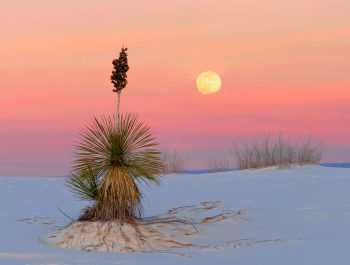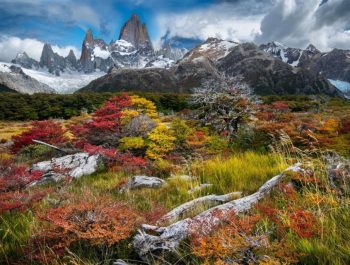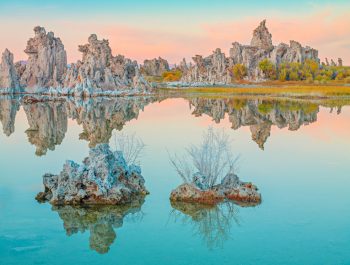Creating Artistic Photographs: Antelope Canyon Inspirations Part 1: Lower Antelope Canyon
Introduction
Antelope Canyon is one of the most amazing photographic locations anywhere. It is also one of my favorite places to photograph. In this series of essays, I write about my experiences discovering, exploring, and photographing Antelope Canyon. These essays have been ready for some time but Antelope Canyon is closed due to the Covid 19 protective measures taken by the Navajo Nation Tribal Government I was waiting to publish them. Here they are now.

Beginnings
The first time I went to Lower Antelope Canyon was in the Summer of 1986. My mother and sister were visiting me and we were touring the Southwest together. We went to Page, Arizona and while there I thought it was a good time to try and locate Antelope Canyon. I had heard of it and I was given a vague idea of its location. We set to find it and we’re fortunate to find the entrance to Lower Antelope, something not so easy to do because the entrance is nothing more than a crack in the ground, a small narrow slit in the earth, invisible to the eye until you are a few feet away from it. It is so hard to see that when we teach workshops to Antelope Canyon participants regularly ask ‘where are we going?’ when we lead them to the entrance of the slot. We are met by disbelief when we explain we are going to the entrance of Lower Antelope.
That first visit was fortunate and frustrating at the same time. Fortunate because I found Antelope Canyon which at the time was not on anyone’s radar and whose location was known only to few, essentially canyoneers who rappelled up and down slot canyons and photographers who knew of the unique photographic possibilities offered by slots and especially by Antelope.
Slot canyon photography is unique because the light and the form of the canyons combine to create artistic possibilities found nowhere else. I witnessed this first hand when I made my first entrance through the narrow crack that is the entrance to Lower Antelope. Unfortunately, my visit was cut short because I could only access the upper part of the slot. My exploration was stopped by the first drop off which required a rope to negotiate. I had none so I had to stop there. I did not want to take a chance, jump down and not be able to climb back up. A rope anchor to the side of the drop-off told me that going down had been done by those who preceded me and it made me jealous not to be able to do it myself. It also convinced me that I needed to get a rope, anchors, and carabiners and return with all this plus camera, lenses, tripod, and film to capture what I now knew to be an incredible place.
However I could not leave things like this on this first visit, I could not leave without trying to get in somehow. Maybe there was another way. I could see the slot was fairly short by the way it dipped down precipitously, a feature that caused the drop-off that had stopped me so far. So I walked along the left side of the canyon rim looking for another possible entrance. I found several small ‘side-slots’ that allowed me to go partway down but each one ended up in a drop-off from where I could see the wonders I was yearning to photograph but that did not give me access to the bottom. Following the rim of the slot, I eventually made my way to the main Antelope Canyon, a much wider canyon into which the slot drains, and there I saw that Lower Antelope ended in an abrupt final drop-off maybe a hundred feet high.

There were rope anchors at the top and whoever had been there previously left a rope attached! This was my luck. Maybe attaching the rope to this anchor was challenging therefore leaving it there permanently was more a matter of practicality than of forgetfulness. Whatever the case might be this was my luck. I set to climb up the vertical canyon wall by pulling myself up on the rope while maintaining balance with my feet pressed on the sandstone cliff. My sister, who was with me on this trip, was a trapeze artist in Paris and I thought climbing up with me would be right up her alley so I asked her but to my surprise she refused. I was therefore alone when I entered Lower Antelope Canyon for the first time. I did so by gaining access to the final chamber, which is also the widest and tallest chamber, an area which is today closed to visitors because a shrine is located at the top of the location where I climbed up. There was no shrine at that time making me assume that it was installed after guided tours were started, perhaps to protect visitors from accidents or to bring forgiveness to Navajos who lead tours to what is to them a sacred place.
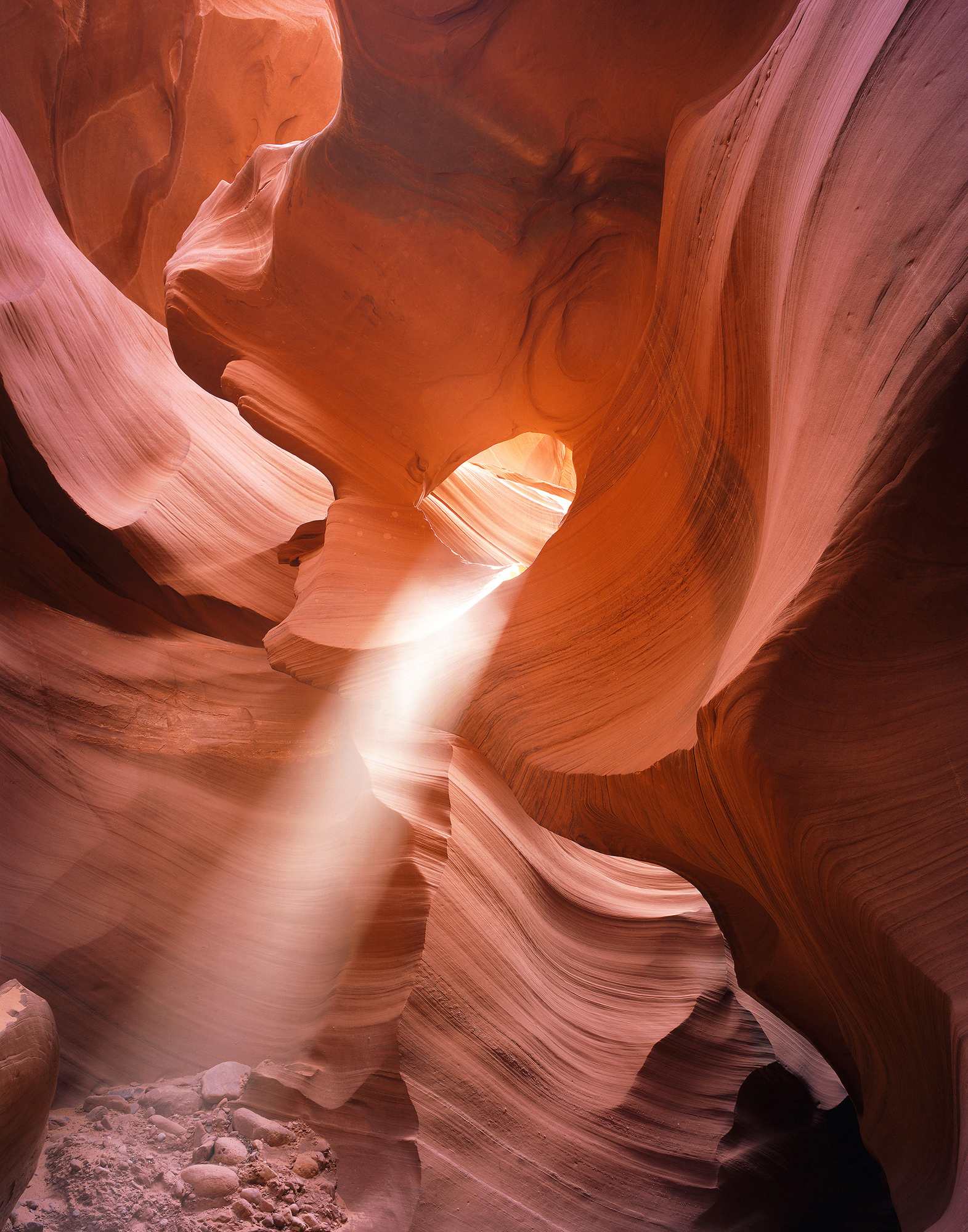
The camera I carried with me on that first climb into Antelope Canyon was a Leica CL with the 40 mm and Kodak Plus X loaded in it. I also used an Olympus OM1 in those days but I did not take it with me because climbing up a rope was easier with a single camera and the CL was the lightest of the two.
The Leica CL was the camera I used for street photography at the time. It was with this camera that I took my first photographs of Antelope Canyon, all of the handheld. Of all the photos I took on that first visit the only one that had a lasting impact was the one from the lower chamber I accessed with the rope, a photograph that looks up towards the upper part of the slot and one I still like to this day. In fact, I won several awards with it by entering contests offered by the Northern Arizona University camera club.
I did not know anything about the light found in slot canyons in those days and I had not learned about the necessity of avoiding ‘hot spots,’ areas of direct sunlight that come out pure white on photographs because of the extreme contrast between light and shade. I had not discovered air-light either, that blue light coming from areas lit only from the blue sky that is deep blue on photographs but appears middle grey to the naked eye, one of the photographic treasures promised by slot canyons and granted to those who know how to find it.
This first visit was followed by numerous subsequent visits. Now equipped with ropes, anchors, and carabiners I was able to access the entire length of Lower Antelope. On some visits I took friends from NAU with me, acting as guides and introducing them to the wonders that fascinated me. While I first photographed Antelope with 35 mm I soon moved up to medium format and eventually to 4×5. When digital came about I moved to 35 mm digital and eventually to medium format digital. Antelope was not just a discovery of form and light it was also a silent witness to my photographic progression, both in regards to the equipment I used and in regards to my artistic development.
Over the years I must have made well over 100 visits to Antelope. The fact is I never counted how many times I went there. This is not important to me. All I know is that I never tire of visiting Antelope Canyon. To this day each visit brings new discoveries, new ideas, and new artistic inspirations. There is value in going back to a place I love, just like there is value in enjoying over and over again my favorite musical pieces, or dishes, or cities, or any other thing that is important to me and dear to my heart.
Discovery is not just seeing something for the first time. Discovery is also seeing a new aspect of something I have seen many times before. Antelope is such a place. I have been there every year since 1986 except for the three years I spent in the upper peninsula of Michigan studying for my Ph.D. at Michigan Technological University until I realized I wanted to make my living as a photographer, not as an academic, and returned to Arizona. One of the first things I did after returning was to visit Antelope Canyon. I felt home again when I got there.
Antelope is part of me. The rock, the sand, the sandstone walls, every part of the canyon evokes something in me. Part of it is memories of previous visits, part of it are images I created and part of it is new images I find each time I visit. I know the canyon wall, I recognize each area intuitively and I recall the images I created in each of them. However no matter how many times I visit there are still areas that surprise me, areas that I do not remember, and areas that look different because I have never been there at that specific time of day or year when the light shines in a manner I have not witnessed before.
Each visit brings with it the surprise of new appearances, of new creative possibilities, of new photographs not created before. One would think that after that many visits I have exhausted all possibilities. It is the opposite. The more I visit and the more I find new ideas and see new images. Maybe this is unique to this place because the complex combination of shapes and colors creates different lighting conditions each hour of the day and each day of the year. Or maybe this is true of every place, every location, whether it is a slot canyon, an intimate landscape, or a grand landscape. Maybe this is the fascinating aspect of landscape photography. The endless combination of shapes, colors, and light created by the seasons and the weather makes the creation of photographic images an experience that offers new possibilities each time we visit.
I witnessed this in Antelope Canyon. On a winter day with clear blue skies Antelope takes on mauve and purple hues, the sun too low in the sky to shine directly into the canyon creating cool pastel colors, the blue of air-light mixing up with the warm tones of bounced sunlight, warmth combining with cool, reds and oranges mixing up with blues and mauves, together creating a palette present at no other times of the year.
During the spring and fall equinoxes the angle of the sun, midway between its lowest and highest position of the year, sends sunbeams through the canyon’s arches. The most beautiful is the Eye of the Wind arch, a hole in one of the main formations halfway down the canyon where for 15 minutes each spring and fall a beam of light shines directly through the arch while another one, a few minutes later, appears behind the arch creating a fantastic display, a natural light show, unlike any I have ever seen. It is a natural phenomenon unique to Antelope and one I have waited for and witnessed each time I have been there at that time of the year.
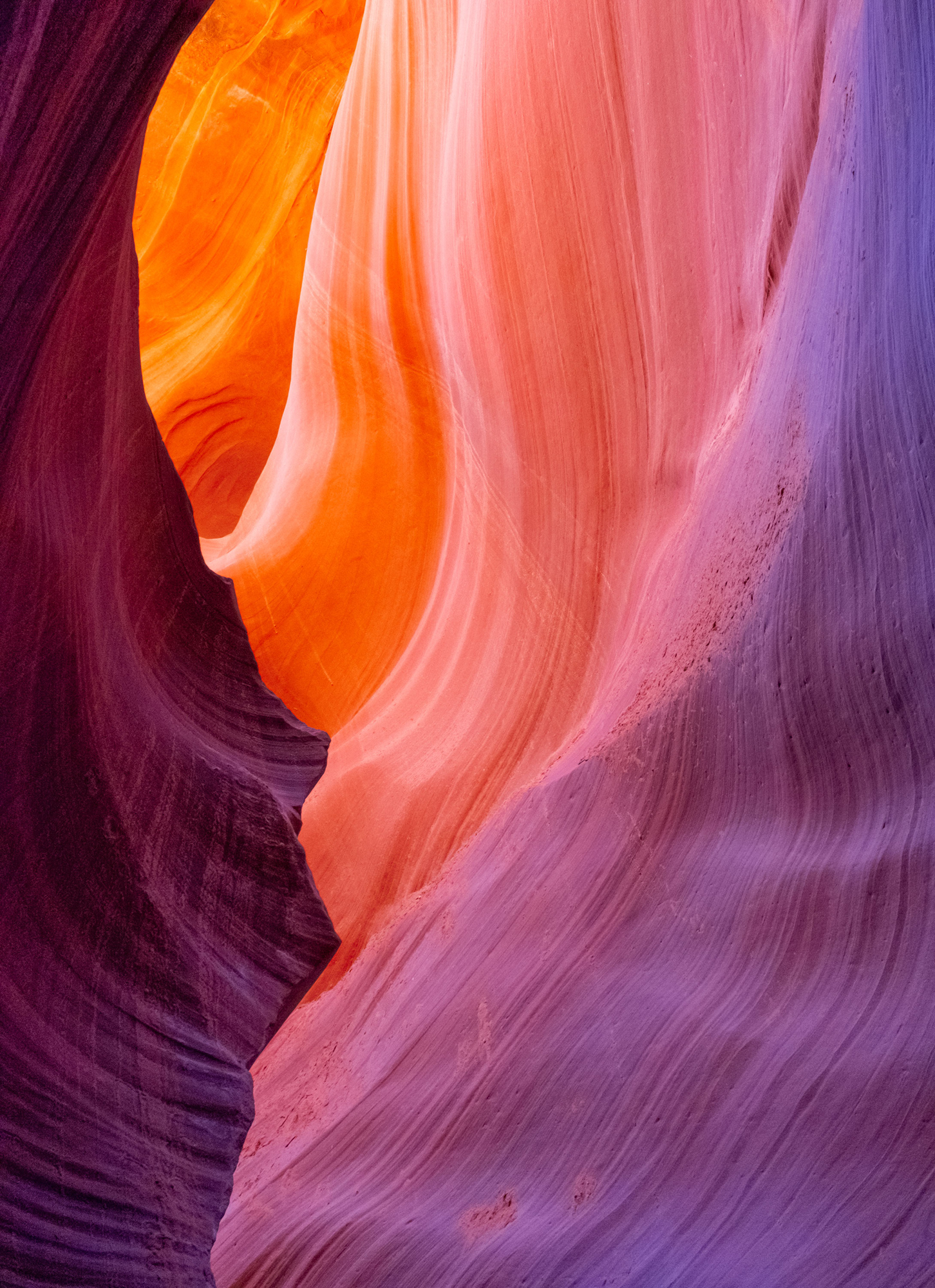
In the heat of summer, around 10 in the morning, the colors of Antelope Canyon are warm and soft. The sun, still low in the sky sends its beams at a steep angle causing them to bounce around the canyon walls, creating diffused reflected light throughout the vast upper chambers, giving the sandstone a warm glow colored with oranges and yellows.
Near the summer solstice, when the sun is at its apex in the sky and positioned directly above the slot, multiple beams of sunlight shine straight through the slot, forming light shafts on their way down to the sandy canyon floor. These magical events are made more complex by the geography of the slot and the geological formations present between the top and the bottom. The combination of these factors causes some of the beams to bounce around. As they do they illuminate the inner walls of the canyon in many different ways, the light quality ranging from soft and diffused to harsh and direct. The colors are pastel where the light is reflected, soft tones blending seamlessly with the ones next to them, but contrasty where light beams light the sandstone directly, dark shadows being located next to areas of direct light.
This is the time to look for bounced light, light reflecting from one canyon wall to the opposite canyon wall, knowing that as the light bounces back and forth it increases in color saturation, the orange color of the walls being added to each other until it creates, depending on the specific location, colors ranging from delicate yellows to glowing crimsons with every tone in between.
Later in the day, around 4 or 5 pm, as the sun goes down and gets too low in the sky to shine into the canyon, colors are cooler, composed of mauves, pinks, and deep oranges, with crimson reds found in a few areas.
The multitude of colors found in Antelope Canyon is sought after tones, colors desired by photographers. However, I learned over the years that capturing them requires knowing what time to be there and what to look for. While looking in one direction will reveal only shadowy areas devoid of color, looking in another direction will offer a dismaying array of rare colorations, the kind that makes me scramble for my gear in an attempt to capture the display I see as quickly as possible, knowing it may vanish any minute, turning the walls that are now glowing with color into bland areas devoid of saturation, areas interesting only for their shapes because the colors that were present a few minutes ago have now vanished. Here experience is key and returning, again and again, is the element that turns disappointment into success. Coming back is necessary.
Changes
Antelope has changed over the years, not in regards to its geology that follows a time scale which we cannot physically notice, but in regards to the way I have accessed it. During my first visit, I parked along the paved road. Later I found it more convenient to park at the head of the canyon. In the early days, the top of the canyon was used as a housing area for the workers of the Navajo Generating Station power plant which was located a couple of miles up US 98, the road that separates Upper and Lower Antelope.
During my many visits, I met some of the Native Americans who worked at the Generating Station. Most of them were unaware of the beauty present in the underground slot because they used the area as a dormitory, content to park their trailer there, not interested in wandering around exploring the landscape. One of them was the security guard for the Generating Station, a Hopi who gave me a power plant sticker to put on my truck saying that it would make me look like I worked there, making my unattended truck safer from possible break-ins, something which is always a concern in remote areas.
I often spent the night in the housing area at the head of Lower Antelope, sometimes pitching a tent sometimes sleeping in the back of my truck, and sometimes joined by other photographers attracted like me by the beauty of Antelope. In the evening we drank beer with the local residents while watching the sunset, physically exhausted from a day of photographing and climbing in and out of Antelope. We were tired and had witnessed so much beauty that we were uninterested in photographing the blazing sunset unfolding in front of us. I remember the day that a photographer asked one of the Navajo residents how many sunsets like the one we were witnessing he had seen. ‘Many’ was his answer. That single word encompassed his experience living in Navajoland, seeing the sunset every day over the Colorado plateau. There was an event we were witnessing once but that for him was a daily occurrence, an aspect of his life so elemental it required no detailed explanation.
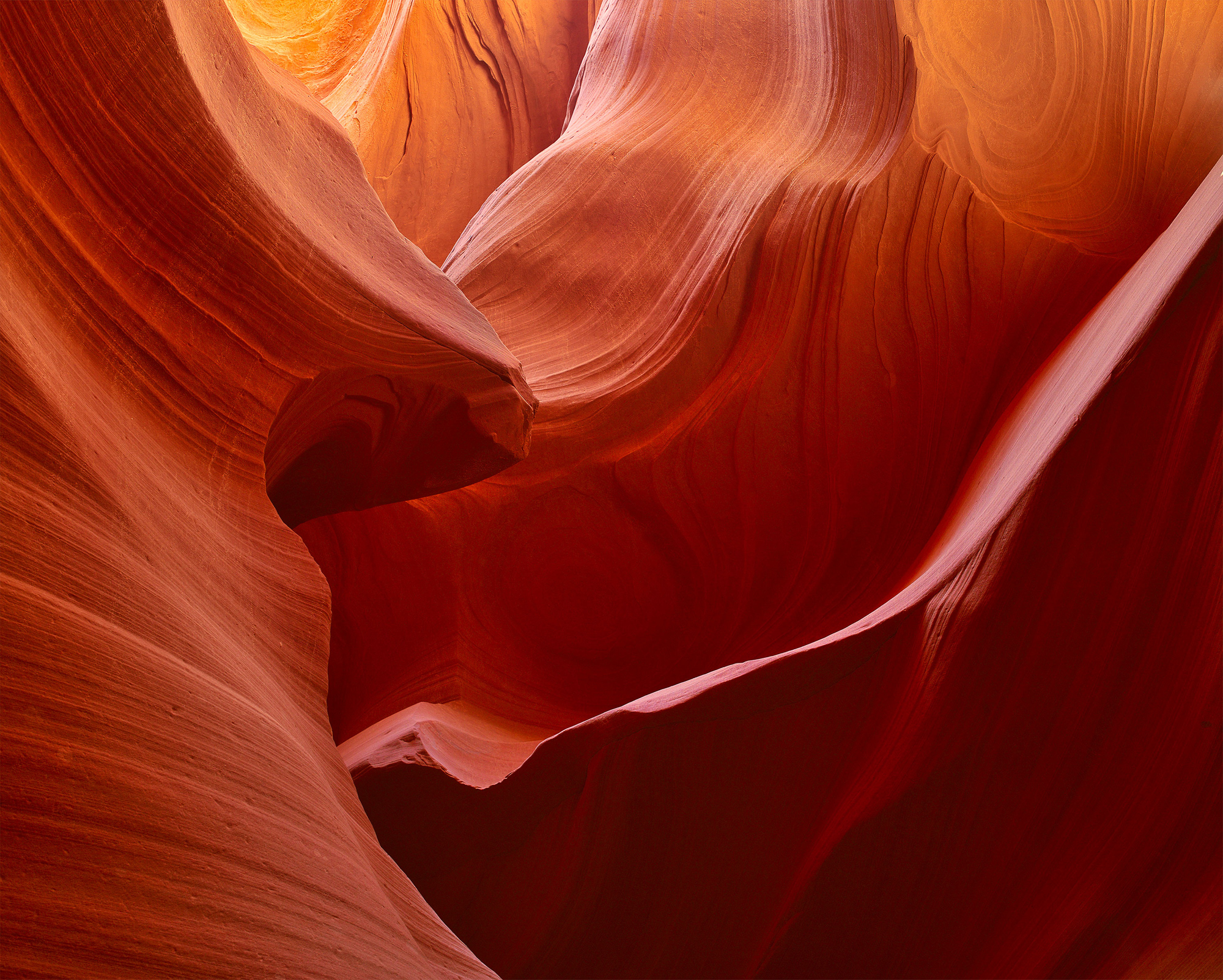
Today the location has changed again in regards to the human-controlled part of it. What was once the living quarters for power plant workers is now the parking lot, staging area and check-in stands for photography and touristic tours. Today two operators offer tours to Lower Antelope: Ken White and Dixie Ellis. Ken was the first to offer tours. A welder by trade Ken built the metal ladders we now use to get access to the canyon. Visitors no longer need to use ropes and climbing gear to get into the canyon. Tall, medium and short size ladders are placed at every location where in the past we had to climb making it possible for anyone to access the canyon and go through its entire length from top to bottom.
The tours themselves have changed over the years. At first, there was no one to control access. I went in by myself, occasionally warned by the power plant workers who resided there to mind the snakes in the canyon or to be aware that narrow slots are home for ghosts, Skinwalkers, and other scary creatures. Neither was much of a risk. I only saw one Rattlesnake in the canyon, a place where they either seek relief from the heat of summer sun or in which they fall while creeping along the edge. As for Skinwalkers, ghosts, or scary creatures, they seem to affect only Navajos. White people, Bilagaanas as non-Navajos are called, being immune to such presence. Here as in many aspects of Navajo life myth requires belief to become real. Being a skeptic works for me.
Antelope Canyon Workshops
Natalie and I have offered workshops to Antelope Canyon since 2003, guiding photographers to both Lower and Upper Antelope, introducing them to the beauty of the canyon and sharing the knowledge we have acquired over the years. Our goal is to save participants time by teaching them how to photograph Antelope Canyon, avoid mistakes and bring back good photographs of this beautiful location on their first visit. Depending on the year we offer one or two workshops to Antelope Canyon, one in this spring, in April and sometimes one in the fall in November. Details about these workshops are on my site: beautiful-landscape.com
Antelope is on the bucket list of most photographers and I know why: Antelope Canyon is one of the wonders of the natural world. I consider it a ‘must-photograph-it’ location, a place that every photographer needs to photograph at least once in their life. Returning many times is also recommended and again I know why: because it is hard not to. Having been there in excess of a hundred times myself is testimony to this fact.
To Be Continued

The Antelope Canyon drainage features several slot canyons. The most famous are Lower and Upper Antelope. This first essay focuses on Lower Antelope Canyon. My next essay will focus on Upper Antelope Canyon. I decided to write two separate essays because my experience photographing Upper and Lower Antelope is markedly different. I discovered them at different times of my life and I learned how to photograph them in different ways. The challenges offered by each of them and the ways to access them are also quite different. This means there are more stories to be told. Be sure not to miss the next installment!
About Alain Briot
I create fine art photographs, teach workshops with Natalie and offer Mastery Tutorials on composition, image conversion, optimization, printing, business, and marketing. I am the author of Mastering Landscape Photography, Mastering Photographic Composition, Creativity and Personal Style, Marketing Fine Art Photography, and How Photographs are Sold. All 4 books are available in eBook format on our website. Free samples are available so you can see the quality of these books for yourself.
You can find more information about our workshops, photographs, writings, and tutorials as well as subscribe to our Free Monthly Newsletter on our website. You will receive 40 free eBooks when you subscribe to my newsletter.

Studying Fine Art Photography With Alain and Natalie Briot
If you enjoyed this essay you will enjoy attending a workshop with us. I lead workshops with my wife Natalie to the most photogenic locations in the US Southwest. Our workshops focus on the artistic aspects of photography. While we do teach technique, we do so for the purpose of creating artistic photographs. Our goal is to help you create photographs that you will be proud of and that will be unique to you. The locations we photograph include Navajoland, Antelope Canyon, Monument Valley, Zion, the Grand Canyon, and many others. Our workshop listing is available at this link.
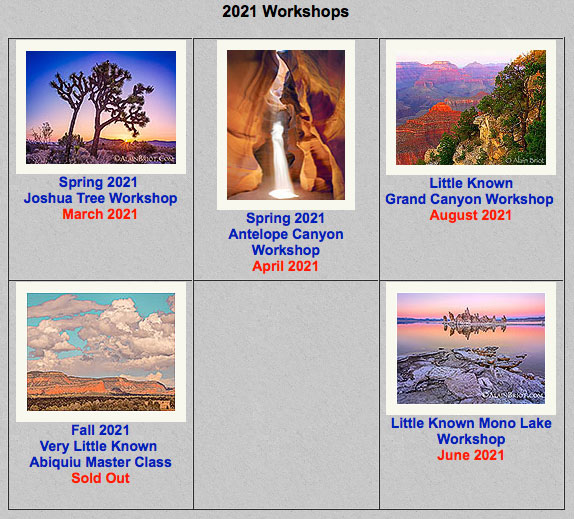
Alain Briot
February 2021
Glendale, Arizona
Author of Mastering Landscape Photography,Mastering Composition, Creativity and Personal Style, Marketing Fine Art Photography, and How Photographs are Sold. http://www.beautiful-landscape.com [email protected]





